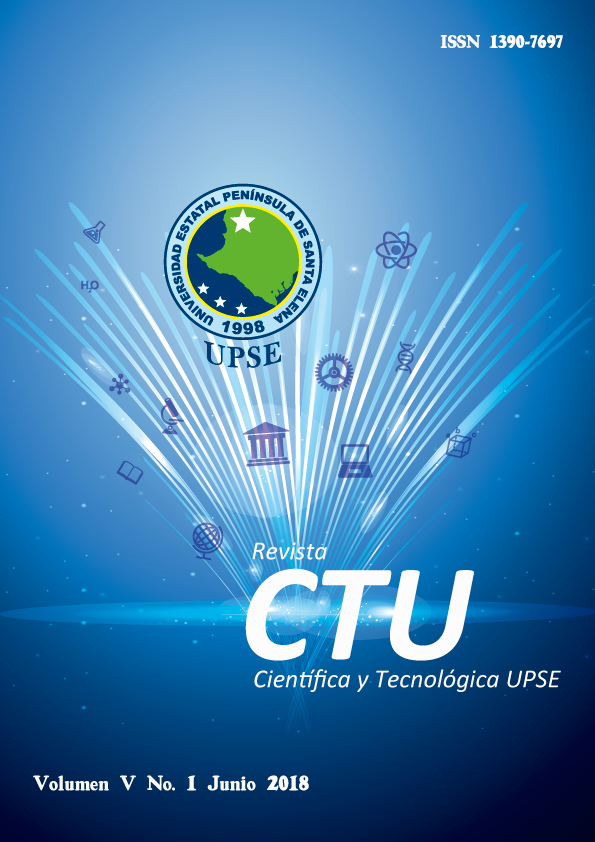Selección de pozos candidatos a Fracturamiento Hidráulico en el campo Gustavo Galindo Velasco.
DOI:
https://doi.org/10.26423/rctu.v5i1.310Palabras clave:
Fracturamiento Hidráulico, Estimulación, Cementación, Producción, Tope del Cemento (TOC)Resumen
El campo Gustavo Galindo Velasco ubicado en la provincia de Santa Elena, ha comenzado a mostrar signos de envejecimiento o madurez, denominándose campo maduro debido a la reducción de la presión del yacimiento, lo que ocasiona una disminución en la producción de los pozos. Para incrementar la producción de los pozos y prolongar la vida de este campo, se propone la selección de pozos candidatos a fracturamiento hidráulico, para ello, es necesario realizar un análisis preliminar de investigación referente al diseño de completación, historial de producción y reacondicionamiento efectuados en cada pozo, formaciones productoras, estimación de sus reservas, correlación e interpretación de registros eléctricos, calidad y tope del cemento, intervalos a punzar y diseño de fractura. Los resultados obtenidos de la investigación, permiten aproximar el incremento de la producción después de efectuar el fracturamiento hidráulico en los pozos seleccionados y el análisis económico respectivo del proyecto, mediante el uso de los indicadores de rentabilidad.
Descargas
Referencias
Baca, G. (2001). Evaluación de Proyectos. México D.F., México: McGraw-Hill.
Ecuador. Pacifpetrol. (2002). Informe Geológico y de Reservorios del Área Ancón.
Ecuador. Pacifpetrol. (2015). Informe de Reservas del Bloque Gustavo Galindo Velazco. Ancón.
Escobar Macualo, F. H. (2000). Fundamentos de Ingeniería en Yacimientos. Neiva, Colombia: Universidad Sur colombiana.
Pazmiño, J. (2004). Fundamentos de la Teoría del Fracturamiento Hidráulico. Quito, Ecuador: Petroecuador.
Vázquez Cárdenas, J. (2009). Mejoramiento de la Conductividad en el Fracturamiento Hidráulico. México D.F., México: UNAM.
Publicado
Número
Sección
Licencia
El titular de los derechos de autor de la obra, otorga derechos de uso a los lectores mediante la licencia Creative Commons Atribución-NoComercial-CompartirIgual 4.0 Internacional. Esto permite el acceso gratuito inmediato a la obra y permite a cualquier usuario leer, descargar, copiar, distribuir, imprimir, buscar o vincular a los textos completos de los artículos, rastrearlos para su indexación, pasarlos como datos al software o usarlos para cualquier otro propósito legal.
Cuando la obra es aprobada y aceptada para su publicación, los autores conservan los derechos de autor sin restricciones, cediendo únicamente los derechos de reproducción, distribución para su explotación en formato de papel, así como en cualquier otro soporte magnético, óptico y digital.












